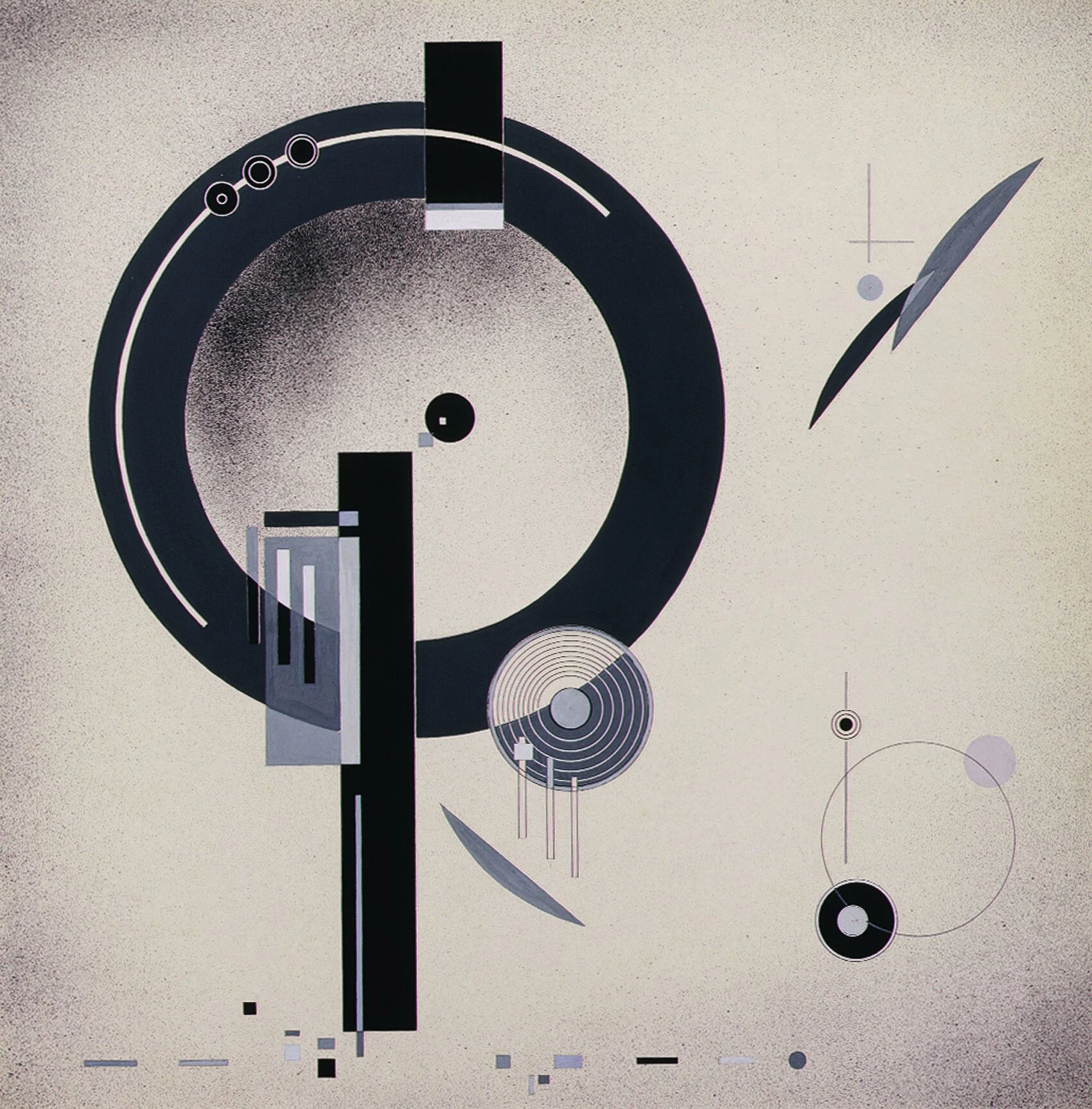ROLPH SCARLETT (1889-1984)
Available Work | Biography
Biography • Rolph Scarlett (1889-1984)
Rolph Scarlett was part of an international circle of avant-garde artists practicing non-objective art. The movement was being led in Europe by Wassily Kandinsky, Fernand Léger, Paul Klee, László Moholy-Nagy, Pablo Picasso, Rudolf Bauer, and Hilla Rebay. Their American counterparts were Irene Rice Pereira, Balcomb Greene, Gertrude Greene, Charles Green Shaw, Ilya Bolotowsky, Jackson Pollock, Jean Xceron, Stuart Davis, Werner Drewes, Isamu Noguchi, Richard Pousette-Dart, Ad Reinhardt, and John Sennhauser.
Born in Guelph, Ontario, Rolph Scarlett studied briefly at the Loretto Academy while working for his father, who was a jeweler. Scarlett moved to New York in 1907, where he worked as a jeweler's apprentice. After World War I he supported himself with a succession of jobs as a commercial designer and a craftsman. In his spare time, however, he painted. Although Scarlett's earliest works were representational, they reveal the artist's tendency to eliminate detail and to reduce compositions to their basic geometric components.
In 1923 Scarlett traveled to Europe, where he saw and was deeply impressed by the work of Paul Klee. During the late 1920's and early 1930's Scarlett worked as a designer in New York, Toledo, and southern California. In 1936 he became aware of the sweeping collection of contemporary art, specifically non-objective, that was being amassed by Irene and Solomon R. Guggenheim under the guidance of Hilla Rebay, the first director of the Museum of Non-Objective Painting (now the Solomon R. Guggenheim Museum). In fact, the Guggenheims became Scarlett's largest patrons, purchasing paintings directly from the artist, many of which found their way into the Guggenheim Museum collection.
Scarlett showed his paintings to Hilla Rebay and regularly attended her lectures and critiques and was exposed by Rebay to the works of Kandinsky, Moholy-Nagy, and Mondrian. Both Rebay and Scarlett believed that art was the expression of man's spirituality and was based on a fundamental set of beliefs about the nature of the universe. Scarlett referred to his paintings as "non-objective," believing that rather than being abstracted, his paintings' imagery was synthesized to represent natural laws and forces.
In 1939 Scarlett was able to give up his commercial work and devote himself solely to painting, at which time he began to exhibit his work regularly. Between 1939 and 1952 Rebay acquired nearly sixty of his paintings and numerous watercolors, drawings, and monotype prints for the Guggenheim collection. The artist's work thus appeared regularly in group exhibitions at the Museum of Non-Objective Painting throughout the 1940's. Scarlett was also the chief lecturer there for five years during that decade. Rebay came to consider Scarlett one of her most eloquent advocates. During the latter part of his life, Scarlett lived in Woodstock, New York, where he designed jewelry, painted, and continued to exhibit his work actively in New York City until the year preceding his death.
Rolph Scrarlett's work is held in the collections of the Carnegie Institute, Pittsburgh, Pennsylvania; the Farnsworth Art Museum, Rockland, Maine; Zimmerli Art Museum, Rutgers University, New Brunswick, New Jersey; Los Angeles County Museum of Art, Los Angeles, California; Macdonald Steward Art Centre, Guelph, Ontario; Montreal Museum of Fine Arts, Montreal, Quebec; Sheldon Memorial Art Gallery, Lincoln, Nebraska; the Smithsonian American Art Museum, Washington, DC; the Solomon R. Guggenheim Museum, New York, New York; The Brooklyn Museum of Art, Brooklyn, New York; The Cummer Museum of Art, Jacksonville, Florida; the Museum of Modern Art, New York, New York; the Whitney Museum of American Art, New York, New York; and the Woodstock Artist Association, Woodstock, New York.

